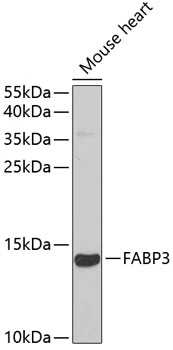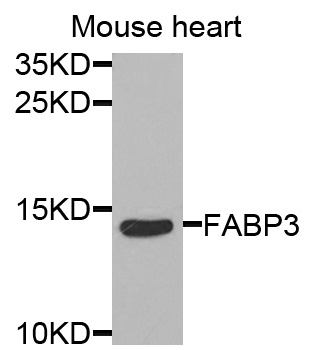FABP3 antibody [67D3] (Biotin)
GTX16917
ApplicationsImmunoPrecipitation, Western Blot, ImmunoHistoChemistry, ImmunoHistoChemistry Frozen, ImmunoHistoChemistry Paraffin, Other Application
Product group Antibodies
TargetFABP3
Overview
- SupplierGeneTex
- Product NameFABP3 antibody [67D3] (Biotin)
- Delivery Days Customer9
- Application Supplier NoteIA: Use at an assay dependent dilution. IHC-P: Use at an assay dependent dilution. IHC-Fr: Use at an assay dependent dilution. IP: Use at an assay dependent dilution. WB: Use at an assay dependent dilution. Predicted molecular weight: 15 kDa. Optimal dilutions/concentrations should be determined by the end user.
- ApplicationsImmunoPrecipitation, Western Blot, ImmunoHistoChemistry, ImmunoHistoChemistry Frozen, ImmunoHistoChemistry Paraffin, Other Application
- CertificationResearch Use Only
- ClonalityMonoclonal
- Clone ID67D3
- Concentration0.1 mg/ml
- ConjugateBiotin
- Gene ID2170
- Target nameFABP3
- Target descriptionfatty acid binding protein 3
- Target synonymsFABP11, H-FABP, M-FABP, MDGI, O-FABP, fatty acid-binding protein, heart, epididymis secretory sperm binding protein, fatty acid binding protein 11, fatty acid binding protein 3, muscle and heart, heart-type fatty acid-binding protein, mammary-derived growth inhibitor, muscle fatty acid-binding protein
- HostMouse
- IsotypeIgG1
- Protein IDP05413
- Protein NameFatty acid-binding protein, heart
- Scientific DescriptionThe intracellular fatty acid-binding proteins (FABPs) belongs to a multigene family. FABPs are divided into at least three distinct types, namely the hepatic-, intestinal- and cardiac-type. They form 14-15 kDa proteins and are thought to participate in the uptake, intracellular metabolism and/or transport of long-chain fatty acids. They may also be responsible in the modulation of cell growth and proliferation. Fatty acid-binding protein 3 gene contains four exons and its function is to arrest growth of mammary epithelial cells. This gene is a candidate tumor suppressor gene for human breast cancer. Alternative splicing results in multiple transcript variants. [provided by RefSeq, Mar 2016]
- Storage Instruction2°C to 8°C
- UNSPSC12352203

![FABP3 antibody [5B5]](https://www.genetex.com/upload/website/prouct_img/normal/GTX19724/FABP1-antibody-5B5-GTX19724-IHC-1_w_23060620_855.webp)
![FABP3 antibody [9F3]](https://www.genetex.com/upload/website/prouct_img/normal/GTX19725/FABP1-antibody-9F3-GTX19725-IHC-1_w_23060620_247.webp)


